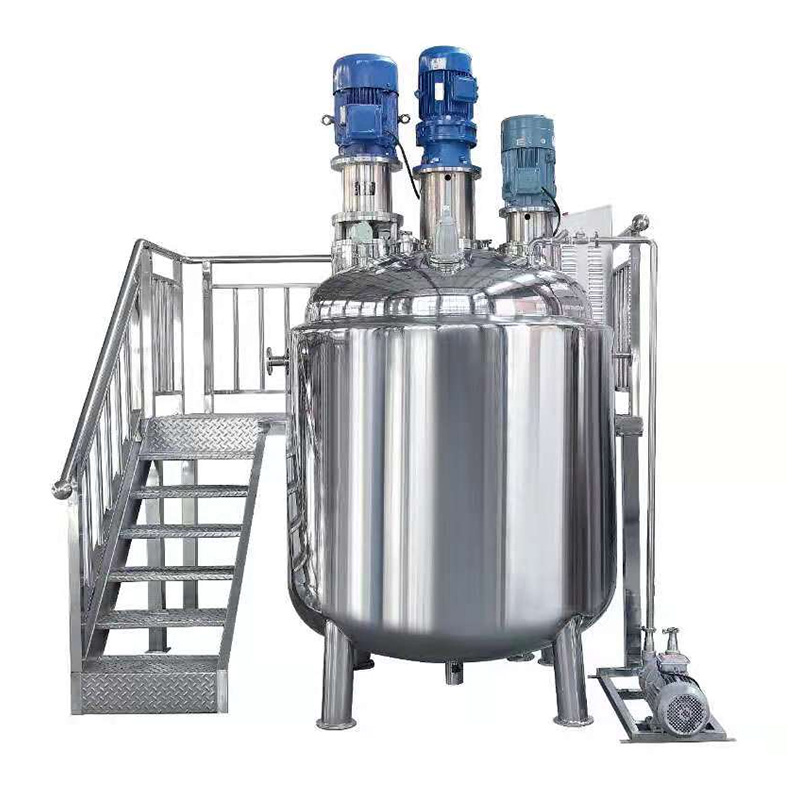In the vast and varied landscape of industrial production, the significance of a well-chosen tank mixer cannot be overstated. The right mixer can enhance efficiency, ensure product quality, and significantly reduce processing times. However, with a plethora of mixer types and configurations available on the market, selecting the ideal solution for a specific application can be a daunting task.
This article aims to demystify the process of choosing the right industrial tank mixer by highlighting key factors to consider, the importance of understanding fluid properties, and the different types of mixers suited for various industrial applications.
Understanding Your Mixing Requirements
Before diving into the vast array of Industrial Tank Mixers, it’s crucial to have a clear understanding of your specific mixing needs. Considerations include the nature of the materials to be mixed, the desired outcome, the volume of production, and any special conditions such as temperature or pressure requirements. These initial considerations will guide the selection process, ensuring that the chosen mixer is capable of meeting the demands of the application.
Key Considerations
- Material Properties: Viscosity, density, and chemical compatibility are critical factors that influence mixer choice.
- Process Objectives: Whether the goal is homogenization, suspension, dissolution, or emulsification, different mixers offer varying capabilities.
- Production Scale: The size of the operation and the volume of material to be mixed can impact the type and size of the mixer needed.
- Operational Conditions: Environmental factors such as operating temperature, pressure, and potential corrosiveness of materials must be taken into account.
Types of Industrial Tank Mixers
Selecting the right type of mixer is paramount to achieving efficient and effective mixing. Here’s a look at some of the most common types of industrial tank mixers and their typical applications.
Top-Entry Mixers
Top-entry mixers are mounted on the top of the mixing tank and are known for their versatility and power. They are suitable for a wide range of applications, from simple liquid blending to processing thick slurries and pastes. Their design allows for easy maintenance and the ability to handle large volumes of material.
Side-Entry Mixers
Side-entry mixers are installed through the side of the tank. They are often used in applications where tank space is limited or where minimizing the introduction of air into the mix is essential. Side-entry mixers are particularly popular in the petroleum and chemical industries for blending and maintaining homogeneity in large storage tanks.
Bottom-Entry Mixers
Bottom-entry mixers are positioned at the bottom of the tank, making them ideal for applications requiring gentle mixing and minimal aeration. These mixers are commonly used in the pharmaceutical and food industries, where sanitary conditions and the prevention of contamination are paramount.
Portable and Static Mixers
Portable mixers can be moved between tanks, offering flexibility for facilities that process multiple products or batch sizes. Static mixers, on the other hand, have no moving parts and mix fluids as they flow through a series of fixed elements within a pipeline, ideal for continuous processing applications.
Considering Mixer Specifications
Beyond the basic type of mixer, several specifications and features should be considered to ensure the selected mixer will perform as required.
Impeller Type and Size
The design of the impeller, the component that creates the flow and mixing action, is crucial. Different impeller types generate various flow patterns and shear rates, affecting the mixing efficiency and the quality of the final product.
Motor Power and Speed
The motor’s power and speed determine the mixer’s capability to process materials of different viscosities and volumes. Variable speed motors offer the flexibility to adjust mixing intensity as needed.
Material and Construction
The construction materials of the mixer should be compatible with the chemicals or substances being mixed to avoid corrosion and contamination. Stainless steel is a common choice for its durability and resistance to corrosion.
Advanced Features
Modern mixers may include advanced features such as automated controls, programmable settings, and real-time monitoring systems. These features can enhance precision, allow for remote operation, and improve overall process efficiency.
Mixer Selection: A Strategic Approach
Choosing the right industrial tank mixer requires a strategic approach that balances operational requirements with cost considerations. Involving engineers and technical experts in the selection process can provide valuable insights into the most appropriate mixing technology for a given application. Additionally, working with reputable manufacturers or suppliers who offer customization options can lead to a more tailored and effective mixing solution.
Conclusion
Selecting the right industrial tank mixer is a critical decision that can significantly impact the efficiency, quality, and cost-effectiveness of production processes. By carefully considering the specific needs of the application, understanding the properties of the materials to be mixed, and evaluating the different types of mixers available, businesses can make informed choices that will serve their operations well into the future. As mixing technology continues to evolve, staying informed about the latest innovations and trends will be key to maintaining a competitive edge and achieving long-term success in the industrial landscape.









